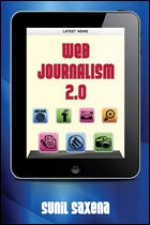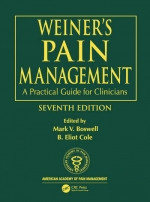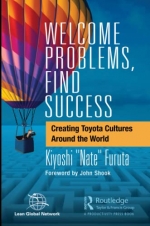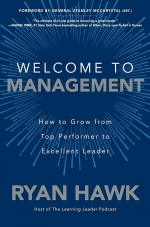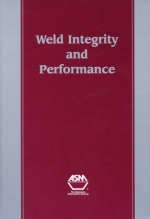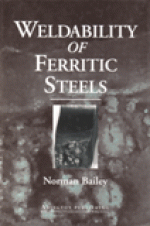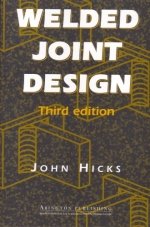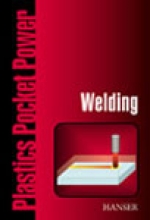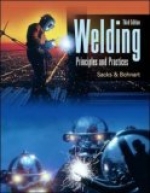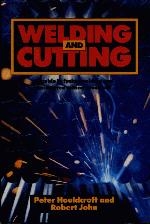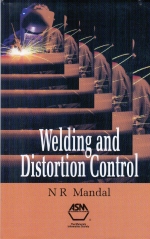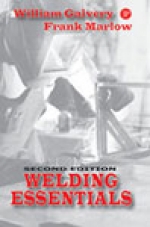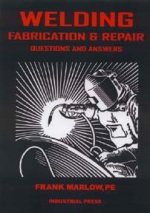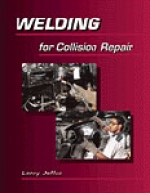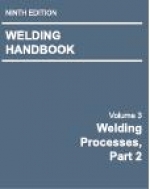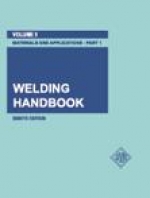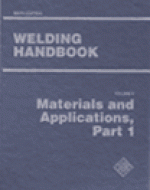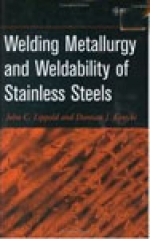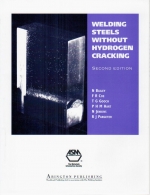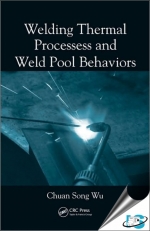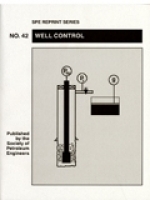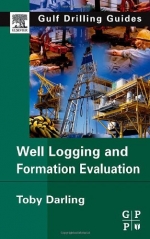Site Breadcrumb
Total Record : 10230
ISBN: 0849338980 / 9780849338984
Year: 2005
Availability: 2 to 3 weeks
Advances in new equipment, new processes, and new technology are the driving forces in improvements in energy management, energy efficiency and energy cost control. The purpose of this book is to document the operational experience with web based systems in actual facilities and in varied applications, and to show how new opportunities have developed for energy and facility managers to quickly and effectively control and manage their operations. You'll find information on what is actually happening at other facilities, and see what is involved for current and future installations of internet-based technologies. The case studies and applications described should greatly assist energy, facility and maintenance managers, as well as consultants and control systems development engineers.
mohan- nAdvances in new equipment, new processes, and new technology are the driving forces in improvements in energy management, energy efficiency and energy cost control. The purpose of this book is to document the operational experience with web based systems in actual facilities and in varied applications, and to show how new opportunities have developed for energy and facility managers to quickly and effectively control and manage their operations. You'll find information on what is actually happening at other facilities, and see what is involved for current and future installations of internet-based technologies. The case studies and applications described should greatly assist energy, facility and maintenance managers, as well as consultants and control systems development engineers.
hell ...ISBN: 0070680833 / 9780070680838
Year: 2012
Availability: Out of Stock
The dynamics and functions of the Indian media are no longer conventional and limited to print and television, thanks to the advent of new technology. Web Journalism 2.0 brings to the reader the fascinating world of New Media and Social Media, their nuances and their impact on communication. It ventures into the Gen Y trend of Social Media, also called the 'Facebook or Google age', and traces the journey of Web Journalism from its inception in India till today. As the book proceeds, the reader is given glimpses of how media is adapting itself to the new technology, and provides quick tips and facts on Internet Journalism.
Imbibing the essence of the first edition Breaking News, Web Journalism 2.0 has a lot more to offer. It includes:
- Journey of Web Journalism from the 1990s to 2012 including blogging and broadband
- News writing and Headline writing explained in greater depth
- An entire new section on writing news for the mobile
- Explanation of the trending topics of Social Media in detail
- A section on website creation with better insights and information
- Chapter-end exercises for quick recap
The author with his 30 years of experience in the domain of journalism and media has endeavored to provide an experiential insight into Web Journalism. The book reaches out to students, practitioners and even general readers.
mohan- n
The dynamics and functions of the Indian media are no longer conventional and limited to print and television, thanks to the advent of new technology. Web Journalism 2.0 brings to the reader the fascinating world of New Media and Social Media, their nuances and their impact on communication. It ventures into the Gen Y trend of Social Media, also called the 'Facebook or Google age', and traces the journey of Web Journalism from its inception in India till today. As the book proceeds, the reader is given glimpses of how media is adapting itself to the new technology, and provides quick tips and facts on Internet Journalism.
Imbibing the essence of the first edition Breaking News, Web Journalism 2.0 has a lot more to offer. It includes:
- Journey of Web Journalism from the 1990s to 2012 including blogging and broadband
- News writing and Headline writing explained in greater depth
- An entire new section on writing news for the mobile
- Explanation of the trending topics of Social Media in detail
- A section on website creation with better insights and information
- Chapter-end exercises for quick recap
The author with his 30 years of experience in the domain of journalism and media has endeavored to provide an experiential insight into Web Journalism. The book reaches out to students, practitioners and even general readers.
hell ...| Buy This Item |
| List Price: ` 638 |

Notify Me |
ISBN: 0849322626 / 9780849322624
Year: 2005
Availability: 2 to 3 weeks.
This seventh edition of a bestseller has been totally revised and updated, making this the most comprehensive rewrite in the book's long and distinguished history. It includes new chapters, new sections and section editors, and new contributors. Offering an interdisciplinary approach to pain management, the book delivers a scholarly presentation for those concerned with pedagogy, while still being accessible to those concerned with the immediate application of techniques.
Here's what you get in the Seventh Edition:
- Tighter focus on discipline-specific approaches
- Expanded coverage of electrical and magnetic therapies
- New information on behavioral approaches
- Diagnostic tests and evaluations
- Updated information on legal and ethical issues
This seventh edition of a bestseller has been totally revised and updated, making this the most comprehensive rewrite in the book's long and distinguished history. It includes new chapters, new sections and section editors, and new contributors. Offering an interdisciplinary approach to pain management, the book delivers a scholarly presentation for those concerned with pedagogy, while still being accessible to those concerned with the immediate application of techniques.
Here's what you get in the Seventh Edition:
- Tighter focus on discipline-specific approaches
- Expanded coverage of electrical and magnetic therapies
- New information on behavioral approaches
- Diagnostic tests and evaluations
- Updated information on legal and ethical issues
ISBN: 1032065923 / 9781032065922
Year: 2022
Availability: In Stock
In this book, author Nate Furuta, former chair and CEO of Toyota Boshoku America Inc., shares the story of his decades of experience directly leading the establishment of Toyota cultures outside Japan. Furuta was the first Toyota employee on the ground at New United Motor Manufacturing Inc. (NUMMI), Toyota’s joint venture in California with General Motors, where he directly led the establishment of the most revolutionary labor-management agreement in the history of the US auto industry. In addition, Furuta was the first Toyota employee on the ground in Georgetown Kentucky at Toyota’s first full-scale, wholly owned manufacturing operation outside Japan, where he led (working directly with President Fujio Cho) the establishment of Toyota’s general management systems and culture there.
This book tells the stories of establishing successful operations in those two iconic organizations as well as others. Furuta reveals details, both stories and process descriptions that only he can tell. He takes you along as he and others lead Toyota’s intense globalization from the early 1980s to recent days. He introduces you to the critical leaders in Toyota's history, such as Taiichi Ohno and Fujio Cho as well as Kenzo Tamai, the head of the company’s HRM function in the 1980s.
This book is not about human-resource management (HRM) policies and procedures. It provides a deep dive into the way senior leaders embody deep awareness of HRM matters, developing and executing company strategy while at the same time developing organizational capability. The role of senior leaders isn’t just a matter of directing the company to achieve objectives; it is a matter of building the capability to achieve those objectives, consistently, and further developing capability as it executes. Key to this is to develop the awareness, attitude, capability, and practice of identifying problems as progress is made toward achieving objectives, which is, in fact, attained through steadily eliminating each problem as it arises. This becomes a self-reinforcing loop of the organization, tapping in to the essence of solving problems while simultaneously developing ever better problem-solving skills and better problem solvers. This loop propels an organization toward meeting its purpose while developing capability for capability development.
Essentially, this book reveals Toyota’s general management systems from the firsthand experience of a Toyota Japanese senior manager and describes, with stories and process examples, the attitude, behaviors, and systems needed to successfully establish and lead in a true Lean business environment.
In this book, author Nate Furuta, former chair and CEO of Toyota Boshoku America Inc., shares the story of his decades of experience directly leading the establishment of Toyota cultures outside Japan. Furuta was the first Toyota employee on the ground at New United Motor Manufacturing Inc. (NUMMI), Toyota’s joint venture in California with General Motors, where he directly led the establishment of the most revolutionary labor-management agreement in the history of the US auto industry. In addition, Furuta was the first Toyota employee on the ground in Georgetown Kentucky at Toyota’s first full-scale, wholly owned manufacturing operation outside Japan, where he led (working directly with President Fujio Cho) the establishment of Toyota’s general management systems and culture there.
This book tells the stories of establishing successful operations in those two iconic organizations as well as others. Furuta reveals details, both stories and process descriptions that only he can tell. He takes you along as he and others lead Toyota’s intense globalization from the early 1980s to recent days. He introduces you to the critical leaders in Toyota's history, such as Taiichi Ohno and Fujio Cho as well as Kenzo Tamai, the head of the company’s HRM function in the 1980s.
This book is not about human-resource management (HRM) policies and procedures. It provides a deep dive into the way senior leaders embody deep awareness of HRM matters, developing and executing company strategy while at the same time developing organizational capability. The role of senior leaders isn’t just a matter of directing the company to achieve objectives; it is a matter of building the capability to achieve those objectives, consistently, and further developing capability as it executes. Key to this is to develop the awareness, attitude, capability, and practice of identifying problems as progress is made toward achieving objectives, which is, in fact, attained through steadily eliminating each problem as it arises. This becomes a self-reinforcing loop of the organization, tapping in to the essence of solving problems while simultaneously developing ever better problem-solving skills and better problem solvers. This loop propels an organization toward meeting its purpose while developing capability for capability development.
Essentially, this book reveals Toyota’s general management systems from the firsthand experience of a Toyota Japanese senior manager and describes, with stories and process examples, the attitude, behaviors, and systems needed to successfully establish and lead in a true Lean business environment.
ISBN: 1260458059 / 978126045805
Year: 2020
Availability: Send us an Email (info@standardsmedia.com) for more details
“The ultimate all-in-one guide to becoming a great leader.” —Daniel Pink
From the creator and host of The Learning Leader Show, “the most dynamic leadership podcast out there” (Forbes) that will “help you lead smarter” (Inc.), comes an essential tactical guide for newly promoted managers.
Every year, millions of top performers are promoted to management-level jobs—only to discover that the tactics that got them promoted are not the tactics that will make them effective in their new role. In Welcome to Management, Ryan Hawk provides practical, actionable advice and tools designed to ensure that transition is a successful one.
He presents a new actionable three-part framework distilled from best practices drawn from in-depth interviews with over 300 of the most forward-thinking leaders around the world, as well as his own professional experience going from exceptional individual producer to new leader. Learn how to:
• lead yourself: build skills and earn credibility. Compliance can be commanded, but commitment cannot. People reserve their full capacity for emotional commitment for leaders they find credible, and credibility must be earned.
• build your team: develop a healthy and sustainable culture of mutual trust and respect that creates cohesion. This includes effective hiring and firing practices.
• lead your team: set a clear strategy and vision for your team, communicate effectively, and ultimately drive the results the organization is counting on your team to deliver.
Through case studies, hundreds of interviews, and personal stories, the book will help high performers make the leap from individual contributor to manager with greater ease, grace, courage, and effectiveness. Welcome to management!
mohan- n“The ultimate all-in-one guide to becoming a great leader.” —Daniel Pink
From the creator and host of The Learning Leader Show, “the most dynamic leadership podcast out there” (Forbes) that will “help you lead smarter” (Inc.), comes an essential tactical guide for newly promoted managers.
Every year, millions of top performers are promoted to management-level jobs—only to discover that the tactics that got them promoted are not the tactics that will make them effective in their new role. In Welcome to Management, Ryan Hawk provides practical, actionable advice and tools designed to ensure that transition is a successful one.
He presents a new actionable three-part framework distilled from best practices drawn from in-depth interviews with over 300 of the most forward-thinking leaders around the world, as well as his own professional experience going from exceptional individual producer to new leader. Learn how to:
• lead yourself: build skills and earn credibility. Compliance can be commanded, but commitment cannot. People reserve their full capacity for emotional commitment for leaders they find credible, and credibility must be earned.
• build your team: develop a healthy and sustainable culture of mutual trust and respect that creates cohesion. This includes effective hiring and firing practices.
• lead your team: set a clear strategy and vision for your team, communicate effectively, and ultimately drive the results the organization is counting on your team to deliver.
Through case studies, hundreds of interviews, and personal stories, the book will help high performers make the leap from individual contributor to manager with greater ease, grace, courage, and effectiveness. Welcome to management!
hell ...ISBN: 0871706008 / 9780871706003
Year: 1997
Availability: 45-60 days
Practical information for welding engineers, welders, metallurgists, and materials science engineers involved with the application, fabrication, and assessment of welded structures.
This general reference is a compilation of selected articles from various ASM International publications that deal with structural welds involving important ferrous and nonferrous engineering metals and alloys. Practical information on weldability, weld properties and performance, weld failure-prevention methods, and failure analysis of welds can be used to help solve real-world problems. Also included is information on basic welding metallurgy, weld discontinuities and imperfections, fatigue and fracture, testing and inspection, and repair procedures.
Practical information for welding engineers, welders, metallurgists, and materials science engineers involved with the application, fabrication, and assessment of welded structures.
This general reference is a compilation of selected articles from various ASM International publications that deal with structural welds involving important ferrous and nonferrous engineering metals and alloys. Practical information on weldability, weld properties and performance, weld failure-prevention methods, and failure analysis of welds can be used to help solve real-world problems. Also included is information on basic welding metallurgy, weld discontinuities and imperfections, fatigue and fracture, testing and inspection, and repair procedures.
ISBN: 1855730928 / 9781855730922
Year: 1994
Availability: In Stock
This book is chiefly concerned with the conventional fusion welding processes and their problems and will be of value to practical welding engineers, inspectors and metallurgists. The author also has inmind the needs of those concerned with design and specification, recognising the importance of dealing with problems at the design stage.
mohan- nThis book is chiefly concerned with the conventional fusion welding processes and their problems and will be of value to practical welding engineers, inspectors and metallurgists. The author also has inmind the needs of those concerned with design and specification, recognising the importance of dealing with problems at the design stage.
hell ...ISBN: 1855733862 / 9781855733862
Year: 2000
Availability: In Stock
There’s no doubt…welding plays a crucial role in the manufacture of nearly every product we use! That’s why it’s critical for welding engineers and welding designers to gain a basic knowledge and understanding of the roles each other plays in the welding process. Written by a welding design specialist with 35 years of experience, Welded Joint Design provides a clear and concise explanation of how welded joints and structures are designed and the constraints welding may impose on the design. Thoroughly illustrated, this new edition includes descriptions of the mechanical properties of steel and other structural materials. It will be tremendously valuable to both students and practicing engineers in welding and design, as well as to civil, structural, mechanical and plant engineers who need to learn more about the design of welded products.
mohan- nThere’s no doubt…welding plays a crucial role in the manufacture of nearly every product we use! That’s why it’s critical for welding engineers and welding designers to gain a basic knowledge and understanding of the roles each other plays in the welding process. Written by a welding design specialist with 35 years of experience, Welded Joint Design provides a clear and concise explanation of how welded joints and structures are designed and the constraints welding may impose on the design. Thoroughly illustrated, this new edition includes descriptions of the mechanical properties of steel and other structural materials. It will be tremendously valuable to both students and practicing engineers in welding and design, as well as to civil, structural, mechanical and plant engineers who need to learn more about the design of welded products.
hell ...ISBN: 083113139X / 9780831131395
Year: 2000
Availability: In Stock
Concise yet thorough, Welding: A Management Primer and Employee Training Guide will aid those in welding management with supervision and control of their welding operations, while offering apprentices and industrial practitioners in-depth instruction on the basic manipulative welding and cutting processes. Extensively illustrated, this hands-on reference is organized in easy-to-understand user-specific sections. The first section presents managers and small shop owners with the technical background and practical expertise needed to implement and manage their specific welding operations. In the second section readers will find a complete curriculum for self or in-plant welder training. Easy to use, this program provides all the information and practical training regimens for each of the processes described. Additionally, an extensive data section containing important welding parameters for a range of applications is provided in the third section.
mohan- nConcise yet thorough, Welding: A Management Primer and Employee Training Guide will aid those in welding management with supervision and control of their welding operations, while offering apprentices and industrial practitioners in-depth instruction on the basic manipulative welding and cutting processes. Extensively illustrated, this hands-on reference is organized in easy-to-understand user-specific sections. The first section presents managers and small shop owners with the technical background and practical expertise needed to implement and manage their specific welding operations. In the second section readers will find a complete curriculum for self or in-plant welder training. Easy to use, this program provides all the information and practical training regimens for each of the processes described. Additionally, an extensive data section containing important welding parameters for a range of applications is provided in the third section.
hell ...ISBN: 1569903336 / 9781569903339
Year: 2001
Availability: Out of Stock
Whether you produce automotive parts, medical applications, or mundane consumer goods, welding of plastics and composites is an important step in the manufacturing of these products.
mohan- nWhether you produce automotive parts, medical applications, or mundane consumer goods, welding of plastics and composites is an important step in the manufacturing of these products.
hell ...| Buy This Item |
| List Price: $ 19.95 |

Notify Me |
ISBN: 0078250609 / 9780078250606
Year: 2005
Availability: Out of Stock mohan- nhell ...
| Buy This Item |
| List Price: $ 142.46 |
| Discount: 10% |
| Offer Price: $ 128.21 |

Notify Me |
ISBN: 0831111844 / 9780831111847
Year: 1989
Availability: In Stock
This authoritative reference thoroughly covers every aspect of thermal welding and associated cutting processes. It is essential reading for welding and production engineers, and students, as well as anyone associated with the selection and application of equipment and consumables.
mohan- nThis authoritative reference thoroughly covers every aspect of thermal welding and associated cutting processes. It is essential reading for welding and production engineers, and students, as well as anyone associated with the selection and application of equipment and consumables.
hell ...ISBN: 0871708000 / 9780871708007
Year: 2004
Availability: In Stock
Welding and Distortion Control reviews key welding methods, including sheet metal arc welding (SMAW), gas metal arc welding (GMAW), gas tungsten arc welding (GTAW), submerged arc welding (SAW), and electroslag welding (ESW). Single-side and multi-electrode welding techniques are discussed. A special emphasis is placed on welding in shipbuilding and other heavy fabrication industries. Heat flow analysis and mechanical response using a constant stiffness system are described. Coverage is also provided of distortion prediction tools for large stiffened panels. The chapter on welding distortion starts by explaining the distortion mechanism and subsequently introduces various types of distortions encountered and their prediction methods. Suitable distortion prediction tools are explained to help welding engineers and structural designers implement effective distortion control measures. Information is provided on production-friendly designs for achieving the goal of near zero distortion in fabricated structures to reduce or eliminate the need for tedious postweld fairing work
mohan- nWelding and Distortion Control reviews key welding methods, including sheet metal arc welding (SMAW), gas metal arc welding (GMAW), gas tungsten arc welding (GTAW), submerged arc welding (SAW), and electroslag welding (ESW). Single-side and multi-electrode welding techniques are discussed. A special emphasis is placed on welding in shipbuilding and other heavy fabrication industries. Heat flow analysis and mechanical response using a constant stiffness system are described. Coverage is also provided of distortion prediction tools for large stiffened panels. The chapter on welding distortion starts by explaining the distortion mechanism and subsequently introduces various types of distortions encountered and their prediction methods. Suitable distortion prediction tools are explained to help welding engineers and structural designers implement effective distortion control measures. Information is provided on production-friendly designs for achieving the goal of near zero distortion in fabricated structures to reduce or eliminate the need for tedious postweld fairing work
hell ...ISBN: 0831133015 / 9780831133016
Year: 2007
Availability: In Stock
As a concise yet thorough introduction to the topic, this new edition of Welding Essentials makes welding easy for beginners and is a handy reference for professionals. Its unique, comprehensive question-and-answer format will allow readers to quickly find what they are looking for and fully understand it. Eliminating non-essential items to prevent overloading readers, Welding Essentials addresses safety hazards and required precautions in detail and provides solutions to common problems for each process. Additionally, this valuable reference carefully explains step-by-step setup and shutdown procedures, along with why equipment grounding and GFI's are needed and the way in which they work.
mohan- nAs a concise yet thorough introduction to the topic, this new edition of Welding Essentials makes welding easy for beginners and is a handy reference for professionals. Its unique, comprehensive question-and-answer format will allow readers to quickly find what they are looking for and fully understand it. Eliminating non-essential items to prevent overloading readers, Welding Essentials addresses safety hazards and required precautions in detail and provides solutions to common problems for each process. Additionally, this valuable reference carefully explains step-by-step setup and shutdown procedures, along with why equipment grounding and GFI's are needed and the way in which they work.
hell ...ISBN: 0831131551 / 9780831131555
Year: 2002
Availability: In Stock
Written by the coauthor of the best-selling book Welding Essentials, this practical guide provides insights, ideas, and tips for solving real-world fabrication problems. By presenting a broad range of methods from different welding specialties and a brief, clear understanding of the non-welding knowledge nearly all weldors must have to advance in their trade, Welding Fabrication and Repair can shorten the time needed to develop effective problem-solving skills. Created for weldors who know the basics and now want to put their skills to better use, this book is one of only a handful of truly “must have” welding references.
mohan- nWritten by the coauthor of the best-selling book Welding Essentials, this practical guide provides insights, ideas, and tips for solving real-world fabrication problems. By presenting a broad range of methods from different welding specialties and a brief, clear understanding of the non-welding knowledge nearly all weldors must have to advance in their trade, Welding Fabrication and Repair can shorten the time needed to develop effective problem-solving skills. Created for weldors who know the basics and now want to put their skills to better use, this book is one of only a handful of truly “must have” welding references.
hell ...ISBN: 0766809668 / 9780766809666
Year: 1999
Availability: Out of Stock
This exciting new book isolates the important skills of welding in today's collision market. Everything from the use for new welding equipment and techniques to plasma are cutting, sectioning, and brazing are covered. A thorough overview of collision repair methods, including MIG welding, TIG welding, and oxyacetylene welding gives the reader an understanding of current repair techniques. A substantial portion of the book is devoted to the subject of using automotive plastics in both unibody and traditional frame construction.
mohan- nThis exciting new book isolates the important skills of welding in today's collision market. Everything from the use for new welding equipment and techniques to plasma are cutting, sectioning, and brazing are covered. A thorough overview of collision repair methods, including MIG welding, TIG welding, and oxyacetylene welding gives the reader an understanding of current repair techniques. A substantial portion of the book is devoted to the subject of using automotive plastics in both unibody and traditional frame construction.
hell ...| Buy This Item |
| List Price: $ 109.95 |

Notify Me |
ISBN: 0871710536 / 9780871710536
Year: 2007
Availability: In Stock
This authoritative resource brings together 600 pages of comprehensive information on solid-state and other welding and cutting processes. The book includes chapters on the following welding processes: resistance spot and seam, projection, flash and upset, and high-frequency. The final chapter covers various other welding and cutting processes, including modernized water jet cutting. Written, updated, and peer reviewed by a group of highly respected technical and scientific experts.
• Provides a comprehensive chapter on resistance welding equipment, with photos of state-of-the-art equipment and accompanied by new electrical diagrams and drawings.
• In addition to a chapter on friction welding, a new chapter introduces friction stir welding, the process that has users excited about its significant advantages.
• Discusses the most recent developments in beam technology in greatly expanded chapters on laser beam welding and cutting and electron beam welding.
• Presents a diverse array of processes in chapters on ultrasonic welding, explosion welding, diffusion welding and diffusion brazing, adhesive bonding, and thermal and cold spraying.
• Also discusses various other welding and cutting processes, including sections on two emerging processes: magnetic pulse welding and electro-spark deposition, plus the return of water jet cutting as a modern process.
• Includes a section on safe practices specific to the process in each chapter.
This volume is devoted to information on resistance welding, solid state processes, and other joining and cutting methods. It contains updated resistance welding chapters: spot and seam welding, projection welding, flash and upset welding, high-frequency welding, and resistance welding equipment. The chapter on friction welding been updated. New in this edition is a separate chapter on the developing process variation of friction stir welding. Other chapters explore ultrasonic welding, explosion welding, adhesive bonding, thermal spraying and cold spraying, diffusion welding, and diffusion brazing. The chapters on electron beam welding and laser beam welding and cutting contain significantly expanded technology. The last chapter, Other Welding and Cutting Processes, contains information on two new or revitalized processes, magnetic pulse welding, and electro-spark depositing. New information is presented on water jet cutting, which is reappearing in many current applications as a modern, efficient process.
The chapters in this volume reflect the dramatic changes brought into the welding process over the past decade by the precise control of welding parameters made possible by digital controls and microprocessors as applied to new techniques and advanced materials. Each chapter draws on the expertise of highly qualified experts enthusiastic about the subject process and headed by a chapter chair with an admirable dedication to the details of infusing state-of-the-art information into the basics of processes.
One hundred and ten volunteers contributed, representing university, government, and private welding research and development institutions, manufacturers of welding equipment and materials and manufacturers, fabricators, and welders who use this technology.
This volume, like the others preceding it, is a voluntary effort by the members of the Welding Handbook Committee, The Welding Handbook Volume 3 Committee, and the Chapter Committees. An important contribution is the review of each chapter provided by AWS’s Technical Activities Committee and other specialists.
This authoritative resource brings together 600 pages of comprehensive information on solid-state and other welding and cutting processes. The book includes chapters on the following welding processes: resistance spot and seam, projection, flash and upset, and high-frequency. The final chapter covers various other welding and cutting processes, including modernized water jet cutting. Written, updated, and peer reviewed by a group of highly respected technical and scientific experts.
• Provides a comprehensive chapter on resistance welding equipment, with photos of state-of-the-art equipment and accompanied by new electrical diagrams and drawings.
• In addition to a chapter on friction welding, a new chapter introduces friction stir welding, the process that has users excited about its significant advantages.
• Discusses the most recent developments in beam technology in greatly expanded chapters on laser beam welding and cutting and electron beam welding.
• Presents a diverse array of processes in chapters on ultrasonic welding, explosion welding, diffusion welding and diffusion brazing, adhesive bonding, and thermal and cold spraying.
• Also discusses various other welding and cutting processes, including sections on two emerging processes: magnetic pulse welding and electro-spark deposition, plus the return of water jet cutting as a modern process.
• Includes a section on safe practices specific to the process in each chapter.
This volume is devoted to information on resistance welding, solid state processes, and other joining and cutting methods. It contains updated resistance welding chapters: spot and seam welding, projection welding, flash and upset welding, high-frequency welding, and resistance welding equipment. The chapter on friction welding been updated. New in this edition is a separate chapter on the developing process variation of friction stir welding. Other chapters explore ultrasonic welding, explosion welding, adhesive bonding, thermal spraying and cold spraying, diffusion welding, and diffusion brazing. The chapters on electron beam welding and laser beam welding and cutting contain significantly expanded technology. The last chapter, Other Welding and Cutting Processes, contains information on two new or revitalized processes, magnetic pulse welding, and electro-spark depositing. New information is presented on water jet cutting, which is reappearing in many current applications as a modern, efficient process.
The chapters in this volume reflect the dramatic changes brought into the welding process over the past decade by the precise control of welding parameters made possible by digital controls and microprocessors as applied to new techniques and advanced materials. Each chapter draws on the expertise of highly qualified experts enthusiastic about the subject process and headed by a chapter chair with an admirable dedication to the details of infusing state-of-the-art information into the basics of processes.
One hundred and ten volunteers contributed, representing university, government, and private welding research and development institutions, manufacturers of welding equipment and materials and manufacturers, fabricators, and welders who use this technology.
This volume, like the others preceding it, is a voluntary effort by the members of the Welding Handbook Committee, The Welding Handbook Volume 3 Committee, and the Chapter Committees. An important contribution is the review of each chapter provided by AWS’s Technical Activities Committee and other specialists.
ISBN: 0871714701 / 9780871714701
Year: 1996
Availability: In Stock
This greatly expanded edition includes practical application data, color illustrations, specialized topics, and covers many nonferrous metals, plastics, composites, and ceramics. Gain an overview into such areas as maintenance and repair welding and underwater welding and cutting. Includes applications of the specific metals and processes, weldability, and safe practices.
This volume represents a considerable expansion of the information on topics contained in previous editions, complete with practical application data and color illustrations to guide you.
Covers many nonferrous metals, plastics, composites, ceramics, and specialized topics, like maintenance and repair welding and underwater welding and cutting.
This greatly expanded edition includes practical application data, color illustrations, specialized topics, and covers many nonferrous metals, plastics, composites, and ceramics. Gain an overview into such areas as maintenance and repair welding and underwater welding and cutting. Includes applications of the specific metals and processes, weldability, and safe practices.
This volume represents a considerable expansion of the information on topics contained in previous editions, complete with practical application data and color illustrations to guide you.
Covers many nonferrous metals, plastics, composites, ceramics, and specialized topics, like maintenance and repair welding and underwater welding and cutting.
Year: 2011
Availability: Out of Stock
Extensively revised and updated from the eighth edition, this comprehensive volume had more than 50 experts in materials and materials applications assure its accuracy and the currency of its content. It is a great reference source for engineers, educators, welding supervisors, and welders .
Three basic chapters of this volume, Chapter 1, Carbon and Low-Alloy Steels; Chapter 2, High-Alloy Steels; and Chapter 5, Stainless and Heat-Resistant Steels contain detailed sections on the metallurgy, composition and properties of steels, and methods of producing high-integrity welds in carbon steels, alloy steels, and stainless steels.
Different sets of welding conditions, challenges, and solutions are presented for the specialized steels represented in Chapter 3, Coated Steels; Chapter 4, Tool and Die Steels; Chapter 6, Clad and Dissimilar Metals; Chapter 7, Surfacing Materials; and Chapter 8, Cast Irons. The chapters provide information on the composition, metallurgy, weldability, and recommended welding procedures for these metals.
Chapter 9, Maintenance and Repair Welding, contains a model for a systematic approach to the sometimes-difficult procedures involved in repair welding. Chapter 10, Underwater Welding and Cutting, contains comprehensive information on producing strong, durable welds under very difficult welding conditions for use in the severest of service conditions.
Extensively revised and updated from the eighth edition, this comprehensive volume had more than 50 experts in materials and materials applications assure its accuracy and the currency of its content. It is a great reference source for engineers, educators, welding supervisors, and welders .
Three basic chapters of this volume, Chapter 1, Carbon and Low-Alloy Steels; Chapter 2, High-Alloy Steels; and Chapter 5, Stainless and Heat-Resistant Steels contain detailed sections on the metallurgy, composition and properties of steels, and methods of producing high-integrity welds in carbon steels, alloy steels, and stainless steels.
Different sets of welding conditions, challenges, and solutions are presented for the specialized steels represented in Chapter 3, Coated Steels; Chapter 4, Tool and Die Steels; Chapter 6, Clad and Dissimilar Metals; Chapter 7, Surfacing Materials; and Chapter 8, Cast Irons. The chapters provide information on the composition, metallurgy, weldability, and recommended welding procedures for these metals.
Chapter 9, Maintenance and Repair Welding, contains a model for a systematic approach to the sometimes-difficult procedures involved in repair welding. Chapter 10, Underwater Welding and Cutting, contains comprehensive information on producing strong, durable welds under very difficult welding conditions for use in the severest of service conditions.
| Buy This Item |
| List Price: $ 216 |

Notify Me |
ISBN: 0471473790 / 9780471473794
Year: 2005
Availability: 45-60 days
Welding Metallurgy and Weldability of Stainless Steels, the first book in over twenty years to address welding metallurgy and weldability issues associated with stainless steel, offers the most up-to-date and comprehensive treatment of these topics currently available. The authors emphasize fundamental metallurgical principles governing microstructure evolution and property development of stainless steels, including martensistic, ferric, austenitic, duplex, and precipitation hardening grades. They present a logical and well-organized look at the history, evolution, and primary uses of each stainless steel, including detailed descriptions of the associated weldability issues.
mohan- nWelding Metallurgy and Weldability of Stainless Steels, the first book in over twenty years to address welding metallurgy and weldability issues associated with stainless steel, offers the most up-to-date and comprehensive treatment of these topics currently available. The authors emphasize fundamental metallurgical principles governing microstructure evolution and property development of stainless steels, including martensistic, ferric, austenitic, duplex, and precipitation hardening grades. They present a logical and well-organized look at the history, evolution, and primary uses of each stainless steel, including detailed descriptions of the associated weldability issues.
hell ...ISBN: 1855730146 / 9781855730144
Year: 1993
Availability: In Stock
A comprehensive guide to avoiding hydrogen cracking which serves as an essential problem-solver for anyone involved in the welding of ferritic steels. The authors provide a lucid and thorough explanation of the theoretical background to the subject but the main emphasis throughout is firmly on practice.
A comprehensive guide to avoiding hydrogen cracking which serves as an essential problem-solver for anyone involved in the welding of ferritic steels. The authors provide a lucid and thorough explanation of the theoretical background to the subject but the main emphasis throughout is firmly on practice.
ISBN: 7111219627 / 9787111219620
Year: 2010
Availability: 45-60 days
After introducing the concepts and characteristics of welding thermal processes and weld pool behaviors, this book addresses essential advances in welding analysis and processes with an emphasis on the latest modeling and simulation methods. It covers techniques and formulas for assessing welding thermal processes, finite difference and finite analysis methods for calculating thermal conduction, and numerical simulation of weld pool behaviors in metal-inert-gas/metal-active-gas arc welding, It also covers keyhole and weld pool dynamics in plasma arc welding and vision-based sensing of weld pool shape and geometry. It also provides case studies of fluid flow and heat transfer in tungsten-inert-gas arc welding.
mohan- nAfter introducing the concepts and characteristics of welding thermal processes and weld pool behaviors, this book addresses essential advances in welding analysis and processes with an emphasis on the latest modeling and simulation methods. It covers techniques and formulas for assessing welding thermal processes, finite difference and finite analysis methods for calculating thermal conduction, and numerical simulation of weld pool behaviors in metal-inert-gas/metal-active-gas arc welding, It also covers keyhole and weld pool dynamics in plasma arc welding and vision-based sensing of weld pool shape and geometry. It also provides case studies of fluid flow and heat transfer in tungsten-inert-gas arc welding.
hell ...ISBN: 0071763872 / 9780071763875
Year: 2011
Availability: In Stock
Filled with step-by-step instructions and detailed illustrations, Welding, Second Edition provides an easy-to-follow introduction to oxyacetylene welding and cutting, soldering, and basic metal properties. You'll learn how to set up your workshop, properly use welding equipment, design projects, work safely, and get professional results--even if you have no experience. With coverage of the latest tools, materials, and techniques, this fully updated, hands-on guide serves as an ideal beginner's tutorial as well as an on-the-job reference for experienced welders.
mohan- nFilled with step-by-step instructions and detailed illustrations, Welding, Second Edition provides an easy-to-follow introduction to oxyacetylene welding and cutting, soldering, and basic metal properties. You'll learn how to set up your workshop, properly use welding equipment, design projects, work safely, and get professional results--even if you have no experience. With coverage of the latest tools, materials, and techniques, this fully updated, hands-on guide serves as an ideal beginner's tutorial as well as an on-the-job reference for experienced welders.
hell ...ISBN: 1555630650 / 9781555630652
Year: 1996
Availability: Out of Stock
Acquire a working knowledge of the most important aspects of blowout prevention technology. This reprint covers 11 key points of well control in a series of 20 carefully selected SPE technical papers covering topics such as kick-control procedures, pressure-control equipment, kick detection, shallow-gas/diverter operations, gas migration after cementing, deepwater operations, well-control training, and blowout case histories. A 20-paper annotated bibliography and a 400-paper bibliography provide additional references for further study.
Acquire a working knowledge of the most important aspects of blowout prevention technology. This reprint covers 11 key points of well control in a series of 20 carefully selected SPE technical papers covering topics such as kick-control procedures, pressure-control equipment, kick detection, shallow-gas/diverter operations, gas migration after cementing, deepwater operations, well-control training, and blowout case histories. A 20-paper annotated bibliography and a 400-paper bibliography provide additional references for further study.
| Buy This Item |
| List Price: $ 30 |

Notify Me |
ISBN: 0750678836 / 9780750678834
Year: 2005
Availability: 45-60 days
This handy guide in the Gulf Drilling Guides series offers practical techniques that are valuable to petrophysicists and engineers in their day-to-day jobs. Based on the author's many years of experience working in oil companies around the world, this guide is a comprehensive collection of techniques and rules of thumb that work.
The primary functions of the drilling or petroleum engineer are to ensure that the right operational decisions are made during the course of drilling and testing a well, from data gathering, completion and testing, and thereafter to provide the necessary parameters to enable an accurate static and dynamic model of the reservoir to be constructed. This guide supplies these, and many other, answers to their everyday problems.
This handy guide in the Gulf Drilling Guides series offers practical techniques that are valuable to petrophysicists and engineers in their day-to-day jobs. Based on the author's many years of experience working in oil companies around the world, this guide is a comprehensive collection of techniques and rules of thumb that work.
The primary functions of the drilling or petroleum engineer are to ensure that the right operational decisions are made during the course of drilling and testing a well, from data gathering, completion and testing, and thereafter to provide the necessary parameters to enable an accurate static and dynamic model of the reservoir to be constructed. This guide supplies these, and many other, answers to their everyday problems.




